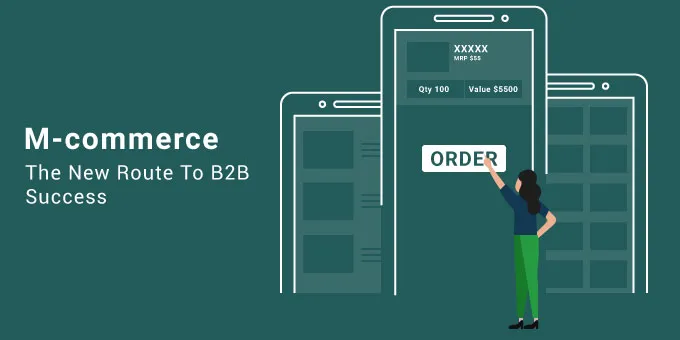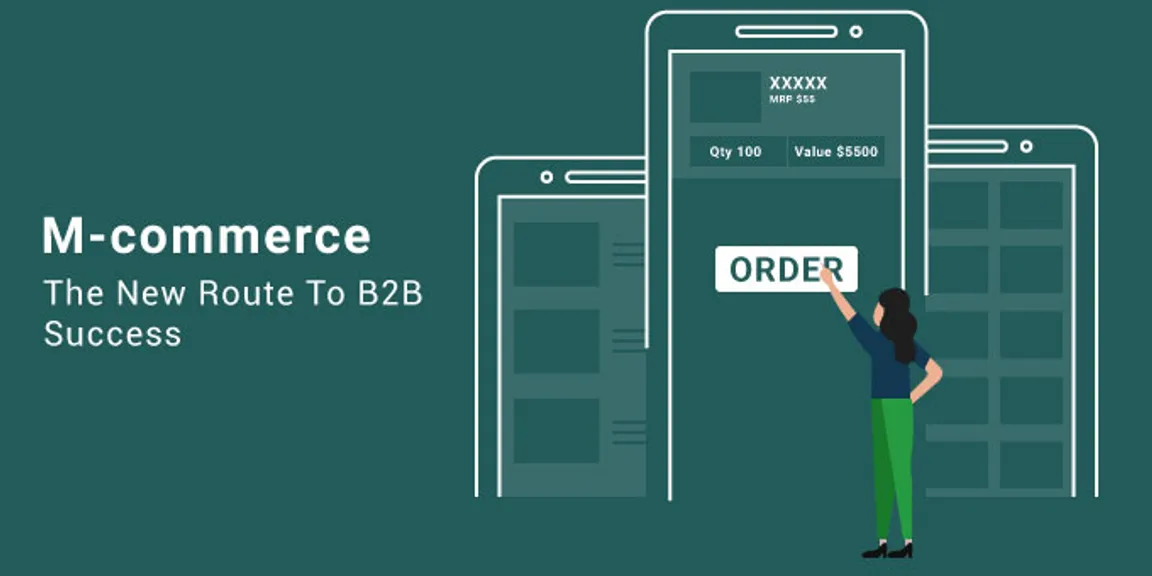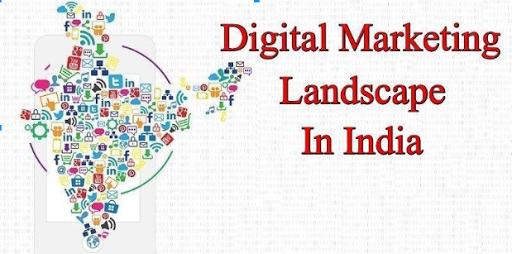

B2B Mobile Commerce: Must-have Features to Grow Your Business
Can you imagine your life without a smartphone? Perhaps this question was a little far-fetched. Let us ask you if you can imagine a single day of your life without a smartphone? Not possible right? Then how can you think of running your B2B web store without it!
It’s incredibly unbelievable that just in a decade, smartphones have gone to dominate every aspect of our life. As per the Statista records, mobile phone usage has mushroomed to 4 billion people globally. Phew, this accounts for nearly 48% of web pages viewed worldwide.
That’s some information, isn’t it?
With the increased usage of smartphones, we seem to take its privilege for almost everything (starting from the alarm that goes in the morning to the Netflix we binge-watch before bedtime). And because of this, we have grown more and more dependent on it.
Did you know that M-Commerce has already crossed multiple demographics? It’s implication for the way we search for products and services in our daily lives is commendable. Not just as customers but also for our business to business needs.
Switching to mobile-friendly options has been substantial in establishing new opportunities for wholesalers where they can connect with their buyers across any industry niche. A Google study conducted proves that presently mobile drives over 40% of revenue for leading business to business companies.

Voila! m-commerce is gearing up so rapidly. And with this comes the question of the day:
What is the status of your business website in the current scenario? It is mobile-optimised to let vendors, dealers and stakeholders navigate easily?
Well, read on these must-have features for your business website that can effectively optimise your B2B outreach strategy and fetch you the sales you want.
1.Adapt new approaches
How can you have a solid mobile plan for your business to business strategy? Obviously, the first thing you would like to do is look and realise!
So, why don’t you fish out your smartphone before you read any further and navigate through your website?
We bet! If you think that zooming in and out the text is a continuous and boring process, then it's probably time to take a call.
One of the best ways to an amazing and effective m-commerce store is to leverage a responsive web design. This helps you to create a single website that can be accessed across all devices. Responsive web design comes with fluid grids and flexible images. This can automatically resize the design and content elements of your store to fit the screen irrespective of its size.
Yet another way to do this is through mobile-optimised themes. These are both attractive and responsive and come with ready-to-use designs and functionalities. If you keenly observe you will notice that most of the modern-day websites are built using this.
A good e-commerce platform should be able to offer you a responsive theme to build your B2B online store. You can simply place your company logo, product details and preferred colours to the already rich theme. A responsive theme can fetch you good traffic and monetization opportunities for your wholesale business. So why not adopt this approach?
2. Optimise your images
What happens when customers visit your website and wait and wait for the images to get loaded? Won’t they run out of patience and feel that something is amiss? Surely, you will be giving them a very disappointing browsing experience and probably lose them forever.
So what then? Well, it isn’t the end of your B2B venture. There is a solution to fix this problem. Maybe you want to drop all heavy images from your website and go with light, low-quality pictures and vector graphics.
And if you are afraid that this will look like an inferior version of the website then there is a solution for this as well. Maybe it’s time you get familiar with the art of optimising images for your business e-commerce store. Here are some tips that can help solve this problem in a jiffy!
- Go for clear-cut images that are easily recognisable even at smaller sizes
- Set the proportion of the images right for your business m-commerce, i.e. images can be cropped in certain places without affecting it
- Upload images that are suitably sized, which means that if your site features larger images then pick the largest pixel dimension
- Most importantly, optimise your images. Compressing them to the point where they still appear sharp can provide high-resolution mobile displays
Optimising your images will help your web page load much faster on mobile devices. This is one factor you don’t want to miss out on, if you want customers making a beeline. Remember, in the world of marketing saying less with an image can impact your B2B customers more.
3. Let them watch
It takes only 1/20th of a second for customers to lose interest if your website doesn’t have anything compelling to say. And most of the people these days hardly want to read anything uninteresting. So, if they don’t want to, perhaps you can tell them the same thing through a video! This makes an effective strategy to attract, engage and convert fleetingly visiting buyers into customers.
The power of video has been proven effective to increase traffic to a B2B website as compared to the text-only options, it helps in engagement and conversions. And that’s not the end of it. Video content leads to
- Higher rankings in search engines
- Greater site traffic
- Increased growth revenue
- Greater response to email marketing campaigns
- Influencing buyers for quicker purchase decisions
- Improved conversions
- Chances of getting boosted on social
Videos can be a great way to take a break from your mundane marketing campaigns. Why not build an effective m-commerce strategy around it?
4.Realise that the clock is ticking
You might not have thought about this one but the time taken for your website to load, matters. Experts say that for best conversion rates, your website should ideally load within the first 2-3 seconds. After that, your conversion rates drop by an average of 7% with each additional second.
A Google study revealed that more than 53% of mobile users leave the site if it takes more than 3 seconds to load. So if your website falls under the B2B segment and the majority of your customers are operating it from their smartphones, you have all the more reasons to let it load quickly.
So you see, few seconds of difference here and there can either plummet your business or balloon it. So why not try seeing the glass half full and improve your website’s load time to retain the visitors? These tips will be handy any day:
- Opt SPA (Single Page Application) for fast loads. It doesn’t require reloads and hence saves time
- MEAN, a mobile-first JavaScript software can stack your site pages and leads to fast loading of m-commerce sites
- A CDN (Content Delivery Network) can help you cache your site on a global network of servers. Whenever a file is requested from your site, it is routed to the closest server
- Cached resources are local, leading to faster load. But offline browser caching helps users navigate the site even in the offline mode
- Choose to use PWA (Progressive Web Apps). It allows web apps to sync in the background and enables them to load even without a network.
While you may not want to go for SEO for your B2B website, mobile page speed optimisation is one feature that you should consider. It does have a positive influence and gives your customers the ease of navigation.
5.Provide an unforgettable user experience
Let’s get this straight: Even if you think your products or services are innovative and have a problem-solving approach for the users, you are not alone. There are several players in the market with a similar claim and chances are that they are working on strengthening their mobile strategy.
Now since envy is not a strategy, you might as well observe what your B2B competitors are doing to provide a user-centric experience. A customer is likely to stick around and buy from you, probably even recommend you to other buyers in their network provided you give them an unforgettable experience.
One way to do this is to slip in your customer’s shoes and think about how would you want your shopping experience.
- What features will help you shop conveniently?
- What signages will help you locate what you need?
- Do these features roll out a happy m-commerce shopping experience?
If you can crack these problems, you can serve your customers more efficiently. But in the interim, take a look at the below features to help you personalise the UX and draw more customers.
- Create a customer database by asking users to create profiles after a one-time purchase. The information should include their names, age, interests, behaviour etc.
- Use the collected information for email marketing by referring your buyers by name. This can also help you design campaigns respective to your customer’s choices, preferences and what they have listed down
- Personalise recommendations to upsell and cross-sell products on your B2B site. Including links to other relevant content such as blogs, videos etc. will provide you more reasons to communicate with your customers more often through regular updates
- Push notification is also an effective feature to engage with your customers, especially when they are not accessing your website. While this may seem annoying to some of your customers, you can’t please everyone!
Whether online or offline most brands these days have taken an empathetic approach towards their customer’s needs. In the long haul, it only creates an enriching user experience.
6. Keep it simple
Your m-commerce strategy should answer the following question like a pro: Will it do you any good if you do not provide customers a simplified ordering process? You got that right!
There are few ways through which you can decode this:
- Equip your website with self-service actions such as ordering products, arranging shipping and tracking their deliveries without any hassle. Customer-empowerment business integrations such as these are useful in enabling automated shipping choices. At the same time, it comes handy for confirming details of stock availability as per product range, type, size etc.
- Robust search capabilities provide your B2B customers to go through extensive product catalogues. Most websites even provide their customers access to their previous purchase history to help them place further orders quickly. How about that?
- Simplify order process experience by offering your customers several modes of payment. This helps in reducing abandoned cart numbers and increases the chances of repeat orders. Offering customers multiple e-payment gateways like PayU, CCAvenue and Paytm is a smart thing to do.
7. Go App
The majority of B2B customers expect a simple, straightforward and transparent purchase process. Can you deliver this with just a few clicks on their phone? Maybe you can deliver more value to your already existing customer service through mobile-first business to business experience.
Think not? Look at the following few reasons to go for a mobile app before you decide otherwise.
- From research to delivery, mobile apps offer endless features at a low cost. In a way, apps optimise the entire m-commerce purchase experience
- By offering features such as barcode scanners, saved purchase info, post payments, push notifications with in-stock products, apps only improve efficiency
- Apps are great for brand recall value. You can easily lift repeat purchases and customer loyalty through them
- Apps reduce cart abandonment since they can optimise checkouts. This saves 20% of the time customers spend filling out long, complex forms.
If you think that traditional apps is not your thing, then how about PWAs or Progressive Web Apps. Since these apps consume low data, require no updates and are reasonably priced, they are very much trending for B2B websites. Also, these apps are great for SEO purposes which provides an additional boost to your business.
In the end, no matter whether you go for a native app or PWA, it should be able to solve the purpose. Your app should provide customers the ease of usage and top-grade mobile experience.
Time to think smart
What’s the first thing you look at when you wake up? Your smartphone! And this might just be the case with the majority of B2B buyers out there. As mobiles have become an integral part of our lives it affected everything we did in a traditional way. This also includes the way we shop.
In today’s tough competitive time, wholesalers should look for an equally smart platform that supports their mobile strategy and provides customers-positive experiences. A good e-commerce platform is likely to offer a mobile-first approach with no additional cost. You can avail hundreds of responsive themes and choose the one that’s best for your business. This way you can leverage the benefits of Google Analytics and SEO capabilities too!
So you see, creating a strong m-commerce strategy for your wholesale business is not that tough after all! Maybe it’s time to pick up your smartphone and get going to check out a suitable platform to pillar your plans.



